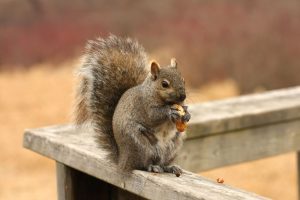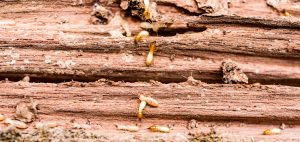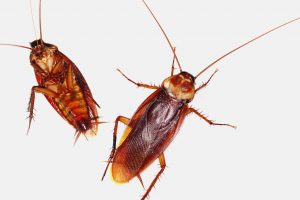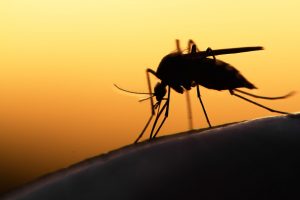
What looks like a wasp, annoys the kids, and has a sting like no other? That would be the deer fly – a nuisance that feeds on blood and pollen, and causes annoyance to every living thing it encounters. Along with the pain that can come from a female’s bite, the deer fly is also a health concern for some people, causing allergic reactions that can at times become deadly. For the majority of healthy humans and animals, though, the deer fly is more so of a nuisance. At times, the deer fly can become quite problematic, especially in areas where an infestation has occurred. This is where appropriate extermination methods should be put into place in order to protect the health of livestock, pets, and other humans.
Deer Fly Life Cycle
The deer fly resemble wasps in appearance, yet are often smaller in size and weight. They have deeply-colored eyes and a dark band across their wings. The female deer fly is often the most ferocious, as she is usually the one to feed on human and animal blood. Her bite can be rather painful, both initially and during the healing stages. Although the deer fly is not known to transmit harmful or deadly diseases, the bite can cause allergic reactions in some people. To avoid the bite, it is best to avoid all contact or interference with her flight.
On the flip side, the male deer fly will often feed on pollen of plants and flowers. Although the male deer fly can damage plants, especially during over-feeding, it is not necessarily a major agricultural pest. The majority of the time, the deer fly is simply a nuisance that can be quite daunting to handle, especially during large-scale infestations. Wetlands and forests are its main hangouts, and it loves being in areas that are humid, damp, and moist. Standing water and garden beds are favorite hangout spots, especially after a newly-fallen rain.
Deer Fly Control
As with most insects and infestation, the first avenue to explore when it comes to controlling the insect is prevention. Since deer flies prefer damp conditions, it is wise to inspect any living area for standing water. Garden beds, the perimeter of houses, kitchens and bathrooms, as well as barns should be inspected. Standing water should be removed, and a dehumidifier should be installed in homes with high humidity. Reducing smaller insect infestations through appropriate pesticide or extermination methods may also be helpful, as well as animal pests, as these will often attract the deer fly to the location. Removing flowers from the home may be helpful if dealing with the deer fly, as the male deer fly feeds on the pollen.
Wasps, hornets, and dragonflies feed on the deer fly and are known to be natural predatory insects. Obtaining these insects and releasing them in the outdoor environment may be helpful at reducing (if not eliminating) a deer fly population. If anything, the presence of these predatory insects may discourage the current residency of the deer fly, and deter new families from moving into the area. Although pesticides and insecticide control is a little tricky, these methods can be applied to any known nesting sites. Most pesticide companies can point individuals in the right direction if they desire to deal with chemical control methods.





